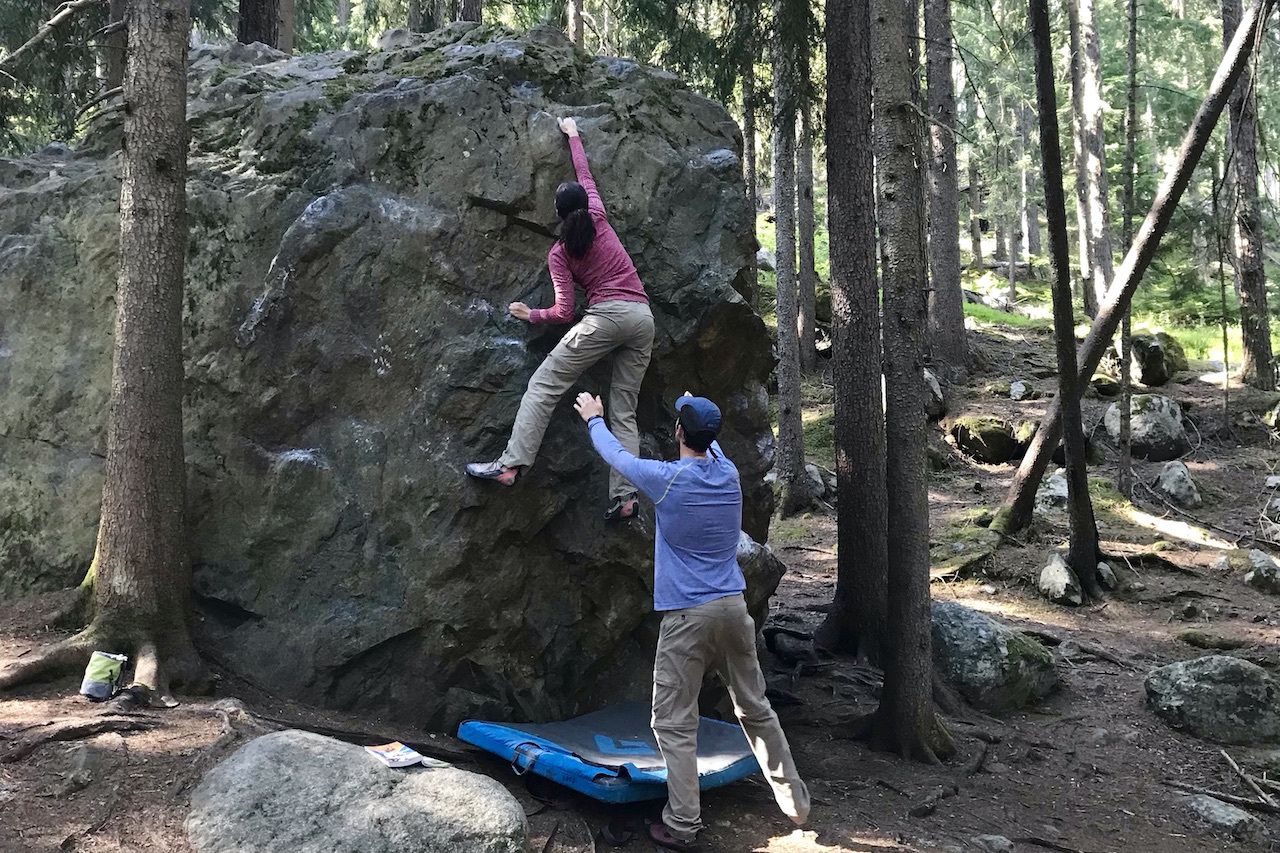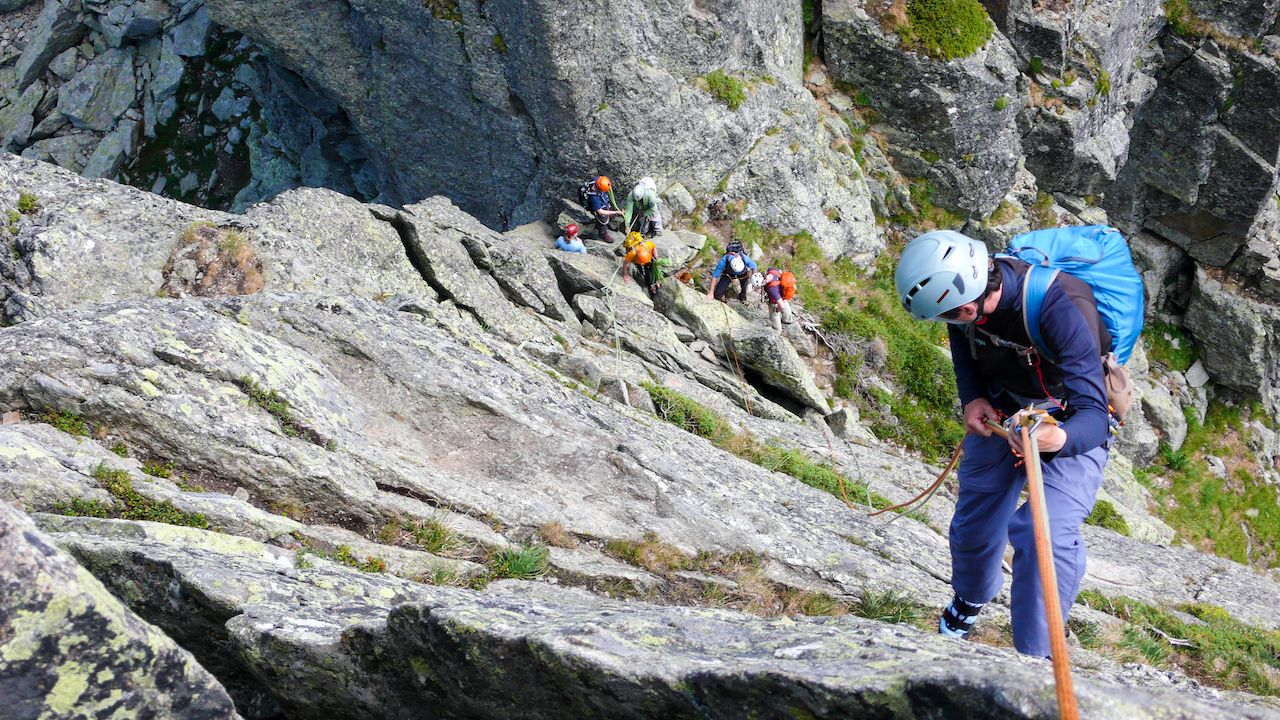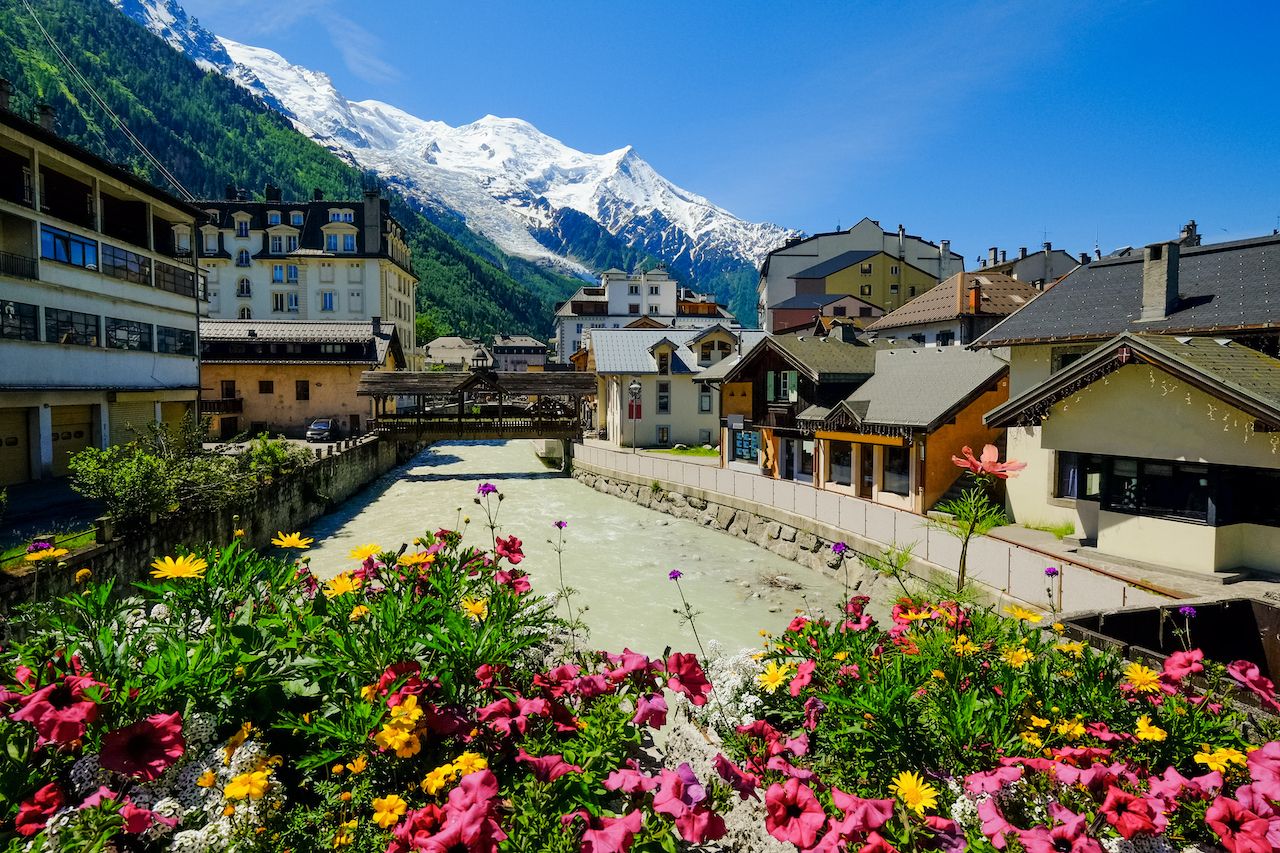Chamonix, France, is a small municipality of 16 villages in a lush valley between glacier-filled mountain ranges that contain the highest peak of Western Europe: 15,774-foot-tall Mont Blanc. First attempts to ascend Mont Blanc date back to the 18th century, and since then Chamonix has been at the center of the development of alpinism and mountaineering in the world.
Many of the crags in the Chamonix valley, which is named for the largest of the valley’s villages, were first developed as training grounds for alpinists. These areas eventually gained prominence with rock climbing enthusiasts in their own right. Chamonix frequently hosts the International Federation of Sport Climbing (IFSC) World Cup, attracting elite climbers from all over the world to the valley.
You don’t need to be an elite climber or an alpinist to make the most of the crags in the valley. Our guide will help you plan your climbing trip and introduce you to well-developed bouldering areas and sport climbing in Chamonix that are beginner to intermediate-climber friendly.






